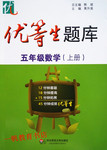题目内容
Let’s ______my scientific knowledge and your business skills and start a company.
A. connect B. relate C. combine D. put
练习册系列答案
 优等生题库系列答案
优等生题库系列答案
相关题目
题目内容
Let’s ______my scientific knowledge and your business skills and start a company.
A. connect B. relate C. combine D. put
 优等生题库系列答案
优等生题库系列答案